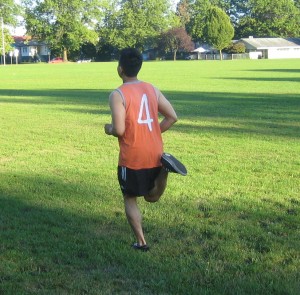It is important to note that a torn gastrocnemius is considered as a serious injury on the rear part of the calf in the leg. When an individual sustains a muscle strain, the tissue disengages and slightly separates. As for a severe strain, it can tear the tissue extensively that any strength conveyed by the consistency of the muscle fibers is lost.
https://www.youtube.com/watch?v=krkCzNwI1fU
The symptoms of a torn gastrocnemius muscle tend to develop quickly or over time due to systematic overuse. In most cases, inflammation of the tissue, muscle weakness and leg pain can be managed through home and medical treatment. You can learn more about these measures by enrolling in a first aid class today.
Bed rest
Bed rest is aimed on avoiding any weight on the affected gastrocnemius muscle during the initial 48 hours. The leg pain and debilitation is usually severe when a muscle is torn thus rest is considered as an obligatory component of the treatment.

Application of cold packs
When an individual has a calf muscle strain that eventually tears, it can lead to severe localized swelling that is accompanied by leg pain and muscle cramps. You can apply an ice pack right after the injury was sustained over the gastrocnemius muscle to help reduce the inflammation and pain. This form of treatment is safe to use up to eight times in a day until the swelling has reduced and to deal with the lingering aches and pain during the recovery period.
Anti-inflammatory medications
There are over-the-counter medications as well as corticosteroid injections that can be used to handle a torn gastrocnemius muscle. In most cases, ibuprofen and aspirin are highly effective in managing moderate leg pain while the doctor can also prescribe a shot in the affected tissue for severe pain.
Using leg aids
Always bear in mind that once the swelling subsides, the individual should move. On the other hand, a torn gastrocnemius muscle will take on significant stress during weight-bearing activity. In such cases, supportive treatment is recommended to prevent further injury. A compression bandage can be applied on the affected muscle as well as encourage the individual to use crutches or a cane to relieve stress on the affected leg.
Rehabilitation
The individual should resume his/her exercise routine gradually to help ease the torn gastrocnemius muscle and the entire body back to normal strength and fitness. A physical therapist should be consulted for the proper exercises to perform without causing re-injury. It is recommended to apply hot packs before stretching and exercise.
Surgical intervention
A torn gastrocnemius muscle has the capability to heal but in cases that involve persistent weakness and pain; surgery might be the only option. An MRI will be taken to help the doctor decide whether or not surgery is needed for the complete recovery of the individual.
